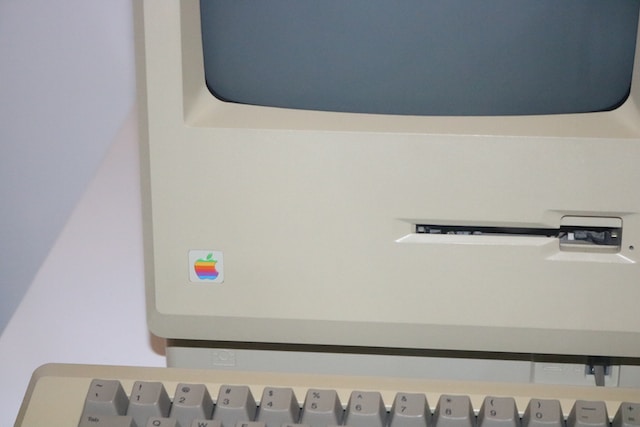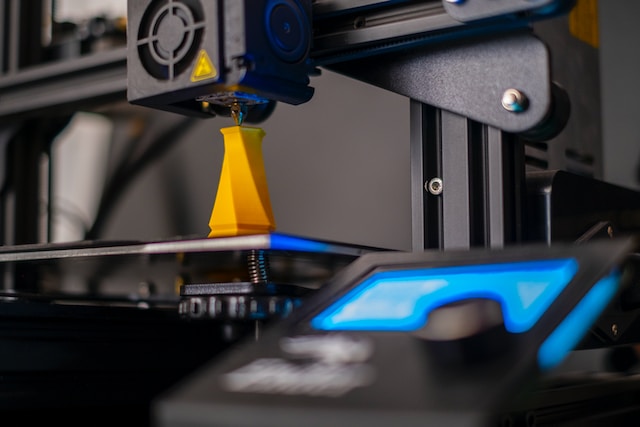Are you curious about how businesses can stay competitive in an ever-evolving market?
Disruptive innovation may be the answer.
Clayton Christensen defines disruptive innovation as introducing new products or services that shake up the existing market and ultimately replace traditional offerings.
This concept has been responsible for changing the landscape of entire industries, from transportation to entertainment.
In this blog post, we’ll explore what disruptive innovation is and how it changes business.
By understanding disruptive innovation, you’ll gain valuable insights into how businesses can stay ahead of the curve and thrive in the face of change.
So, let’s dive in!
The Origins of Disruptive Innovation

Disruptive innovation was first introduced by Clayton Christensen, a Harvard Business School professor, in his 1997 book, The Innovator’s Dilemma.
Christensen observed that many successful companies eventually fail because they’re unable to adapt to changing market conditions. He argued that disruptive innovation was a way for companies to avoid this fate.
Christensen defined disruptive innovation as the process by which a product or service takes root initially in simple applications at the bottom of a market and then relentlessly moves upmarket, eventually displacing established competitors.
Characteristics of Disruptive Innovation

There are two types of disruptive innovation: low-end and new market.
Low-end disruption happens when a company introduces a product or service that is cheaper and simpler than existing offerings but also meets the needs of a segment of customers who were previously unserved or underserved.
New market disruption happens when a company creates a new market that didn’t exist before.
One example of low-end disruption is the personal computer, which disrupted the market for mainframe computers by offering a cheaper and more accessible alternative.
A classic example of new market disruption is the introduction of the iPhone, which created a new smartphone market.
How Disruptive Innovation Changes Business

Disruptive innovation has the power to transform entire industries.
It can create new markets, change customer behaviour, and disrupt established companies. Companies that fail to adapt to disruptive innovation risk becoming obsolete.
One example of a company that failed to adapt to disruptive innovation is Kodak. Despite inventing the digital camera, Kodak failed to capitalize on the technology and ultimately went bankrupt.
Meanwhile, companies like Apple and Google have been at the forefront of disruptive innovation and have seen massive success.
Disruptive Innovation in Practice

To leverage disruptive innovation, companies need to be willing to take risks and experiment with new ideas.
They also need to develop a culture of innovation that encourages employees to think creatively and challenge the status quo.
One example of a company that has successfully utilized disruptive innovation is Amazon. From its early days as an online bookstore, Amazon has consistently disrupted the retail industry with new technologies like Amazon Prime, Amazon Echo, and Amazon Go.
Disruptive Innovation and Digital Transformation

Digital transformation is a form of disruptive innovation that has significantly impacted businesses in recent years.
Digital transformation involves using digital technologies to transform business processes, operations, and customer experiences.
One example of digital transformation is the banking industry, which has been disrupted by the rise of fintech companies that offer digital banking services. These companies have challenged traditional banks by providing faster, more convenient, and more personalized services.
The Importance of Adaptation
To survive in a world of disruptive innovation, companies need to be adaptable.
They must be willing to embrace change and constantly innovate to stay ahead of the competition.
One example of a company successfully adapting to disruptive innovation is Netflix. Originally a DVD rental service, Netflix has transformed itself into a streaming giant that has disrupted the traditional television industry.
Disruptive Innovation and Sustainability
Disruptive innovation has the potential to play a significant role in promoting sustainability.
By disrupting traditional industries and promoting new, sustainable technologies, disruptive innovation can help to address environmental challenges.
One example of a company using disruptive innovation for sustainable practices is Tesla.
Through its innovative electric cars, solar panels, and energy storage systems, Tesla has disrupted the automotive and energy industries while promoting sustainable practices.
Ethics and Disruptive Innovation
Disruptive innovation can also raise ethical concerns.
For example, disruptive technologies can lead to job losses in established industries. Companies that utilize disruptive innovation must be aware of these concerns and take steps to minimize negative impacts.
Additionally, companies need to ensure that their products and services are safe and meet ethical standards.
For example, the rise of social media has raised concerns about privacy and data protection, highlighting the need for ethical considerations in disruptive innovation.
The Future of Disruptive Innovation

The future of disruptive innovation is both exciting and uncertain.
Emerging technologies such as artificial intelligence, blockchain, and 3D printing have the potential to radically transform industries and create new opportunities.
For example, blockchain technology can improve supply chain management and increase transparency, while 3D printing can revolutionize manufacturing and production.
However, with these new opportunities come new challenges.
Companies must be prepared to adapt to the changing landscape and anticipate future disruptions.
This means investing in research and development, fostering a culture of innovation, and embracing new technologies.
Preparing for the future of disruption also requires a deep understanding of emerging trends and technologies.
By staying up-to-date on industry developments and anticipating future trends, companies can position themselves to take advantage of new opportunities and mitigate potential risks.
Conclusion
Disruptive innovation has the power to transform businesses and industries, creating new opportunities and disrupting established companies.
However, companies must be willing to adapt and innovate to stay ahead of the competition.
By embracing disruptive innovation and promoting sustainability and ethical practices, businesses can navigate the challenges and opportunities presented by disruptive innovation.
Ready to take your business to the next level? Visit joistpark.eu to learn more about our innovative solutions and how we can help you streamline your processes, improve efficiency, and boost your bottom line. Don’t wait – start optimizing your operations today by contacting us at info@joistpark.eu.

